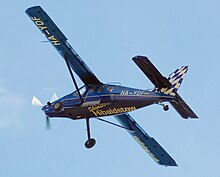Pre-revolutionary Imperial Russia did not have a single national unified system but instead relied on those provided by the manufacturers of the aircraft, like Sikorsky Ilya Muromets or Anatra Anasal.
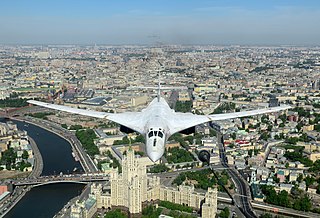
The Tupolev Tu-160 is a supersonic, variable-sweep wing nuclear-capable heavy strategic bomber and airborne missile platform designed by the Tupolev Design Bureau in the Soviet Union in the 1970s. The Tu-160 is operated by the Long Range Aviation branch of the Russian Aerospace Forces.

The Yakovlev Yak-38 was Soviet Naval Aviation's only operational VTOL strike fighter aircraft in addition to being its first operational carrier-based fixed-wing aircraft. It was developed specifically for, and served almost exclusively on, the Kiev-class aircraft carriers.

UEC NPO Saturn, PJSC is a Russian aircraft engine manufacturer, formed from the mergers of Rybinsk Motors and Lyul'ka-Saturn in 2001. Saturn's engines power many former Eastern Bloc aircraft, such as the Tupolev Tu-154. Saturn holds a 50% stake in the PowerJet joint venture with Safran Aircraft Engines. The company, founded by Pavel Soloviev, has its headquarters in the town of Rybinsk.

The Tupolev Tu-95 is a large, four-engine turboprop-powered strategic bomber and missile platform. First flown in 1952, the Tu-95 entered service with the Long-Range Aviation of the Soviet Air Forces in 1956 and was first used in combat in 2015. It is expected to serve the Russian Aerospace Forces until at least 2040.

Soviet Naval Aviation was the naval aviation arm of the Soviet Navy.

The Tupolev Tu-22M is a supersonic, variable-sweep wing, long-range strategic and maritime strike bomber developed by the Tupolev Design Bureau in the 1960s. The bomber was reported as being designated Tu-26 by Western intelligence at one time. During the Cold War, the Tu-22M was operated by the Soviet Air Forces (VVS) in a missile carrier strategic bombing role, and by the Soviet Naval Aviation in a long-range maritime anti-shipping role.

The Ukrainian Air Force is the air force of Ukraine and one of the eight branches of the Armed Forces of Ukraine (ZSU). Its current form was created in 2004 by merging the Ukrainian Air Defence Forces into the Air Force.

The Mikoyan MiG-AT is a Russian advanced trainer and light attack aircraft that was intended to replace the Aero L-29 and L-39 of the Russian Air Force. Designed by the Mikoyan Design Bureau and built by the Moscow Aircraft Production Association, the MiG-AT made its first flight in March 1996. It is the first joint aircraft development programme between Russia and France and the first military collaborative project between Russia and the West to reach first flight. The design lost out to the Yakovlev Yak-130 in 2002 in the competition for a government contract, and had also been unsuccessfully marketed to countries such as India, Greece, and those of the Commonwealth of Independent States.

The Yakovlev Yak-130 is a subsonic two-seat advanced jet trainer and light combat aircraft originally developed by Yakovlev and Aermacchi as the "Yak/AEM-130". It has also been marketed as a potential light attack aircraft. Development of the aircraft began in 1991 and the maiden flight was conducted on 25 April 1996. In 2002, it won a Russian government tender for training aircraft and in 2010 the aircraft entered service with the Russian Air Force. As an advanced training aircraft, the Yak-130 is able to replicate the characteristics of several 4+ generation fighters as well as the fifth-generation Sukhoi Su-57. It can also perform light-attack and reconnaissance duties, carrying a combat load of 3,000 kg (6,600 lb).

Dyagilevo is a military air base in Ryazan Oblast, Russia, 3 km west of Ryazan. It serves as a training center for Russia's strategic bomber force.

Engels-2 is a strategic bomber military airbase in Russia located 14 kilometres (8.7 mi) east of Saratov. Engels is a major bomber operations base, and is Russia's sole operating location for the Tupolev Tu-160 strategic bomber. The base has a 3,500-metre (11,500 ft) runway and about 10 large revetments. It is named after the nearby city of Engels, which is named after the Communist philosopher, Friedrich Engels.

The Soviet post-PFI projects are several Soviet and Russian Air Force projects initiated to replace the PFI-era aircraft.
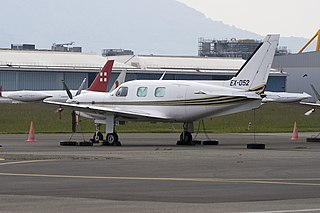
LLC SCF Technoavia, or Scientific Commercial Firm Technoavia, is a Russian aircraft manufacturer. It was established in 1991 by Vyacheslav Kondratiev. The main production facility is located at the Smolensk Aviation Plant.
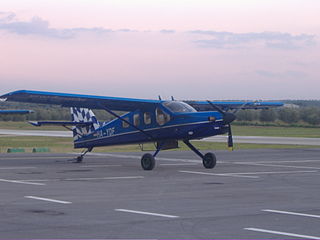
The Technoavia SM92 Finist is STOL utility aircraft, designed by the Russian company Technoavia which first flew on the 28 December 1993. It is built at the Smolensk Aviation Plant.
This is a glossary of acronyms and initials used for organisations in the Russian Federation and formerly the USSR. The Latin-alphabet names are phonetic representations of the Cyrillic originals, and variations are inevitable.

There have been attacks in mainland Russia as a result of the Russian invasion of Ukraine, which began on 24 February 2022. The main targets have been the military, the arms industry and the oil industry. Many of the attacks have been drone strikes, firebombing, and rail sabotage. The Ukrainian intelligence services have acknowledged carrying out some of these attacks. Others have been carried out by anti-war activists in Russia. There have also been cross-border shelling, missile strikes, and covert raids from Ukraine, mainly in Belgorod, Kursk, and Bryansk oblasts. Several times, Ukrainian-based paramilitaries launched incursions into Russia, captured border villages and battled the Russian military. These were carried out by units made up mainly of Russian emigrants. While Ukraine supported these ground incursions, it denied direct involvement.

During the Russian invasion of Ukraine, aerial warfare took place as early as the dawn of 24 February 2022, with Russian infantry and armored divisions entering into Eastern Ukraine with air support. Dozens of missile attacks were reported across Ukraine. The main infantry and tank attacks were launched in four spearhead incursions, creating a northern front launched towards Kyiv, a southern front originating in Crimea, a south-eastern front launched at the cities of Luhansk and Donbas, and an eastern front. Dozens of missile strikes across Ukraine also reached as far west as Lviv. Drones have also been a critical part of the invasion, particularly in regards to combined arms warfare. Drones have additionally been employed by Russia in striking Ukrainian critical infrastructure, and have been used by Ukraine to strike military infrastructure in Russian territory.
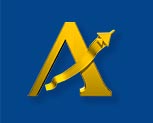
Kharkiv State Aircraft Manufacturing Company or Kharkiv Aviation Factory is a Ukrainian aircraft manufacturing company. During the Soviet era, the plant was known as Aircraft Production Plant 135 and the Central Intelligence Agency classified it as Kharkiv Airframe Plant 135.


